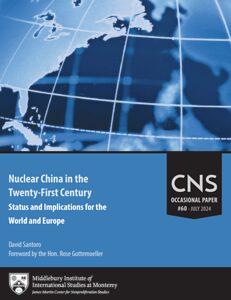July 5, 2024
David Santoro
Introduction
In August 2021, shortly after new evidence surfaced that China might be expanding its nuclear arsenal much more extensively and rapidly than previously assumed, Admiral Charles Richard, Commander of the U.S. Strategic Command, described Beijing’s military investments as a “strategic breakout.” He underscored that the “explosive growth and modernization of [China’s] nuclear and conventional forces can only be what I describe as breathtaking,” adding that “that word, breathtaking, may not be enough.” Since then, several senior officials in the United States, Europe, and elsewhere have echoed that message and the final report of the bipartisan Congressional Commission on the Strategic Posture of the United States published in October 2023 concluded that at its current pace, China “will reach rough quantitative parity with the United States in deployed nuclear warheads by the mid-2030s.”
The result has been the emergence of work, including by this author, to understand this unprecedented development. This work is in its infancy, however, and more is needed to grasp the scale and scope of Chinese nuclear modernization (especially given that much of it is shrouded in secrecy) as well as its implications for strategic stability, deterrence, and arms control and risk reduction. Existing work has focused primarily on the implications for the United States and, to some extent, the United States and Russia. Yet it is also important to grapple with the implications for Europe, especially the North Atlantic Treaty Organization (NATO), and reflect on actions that Europeans, individually or with others, should take in response.

